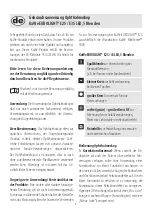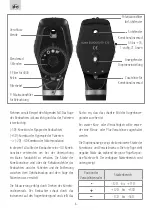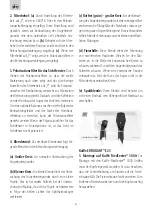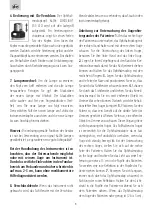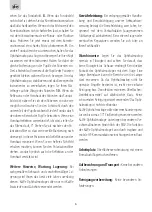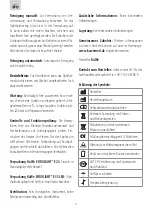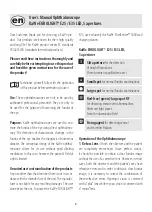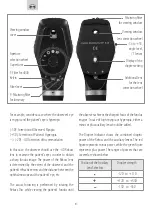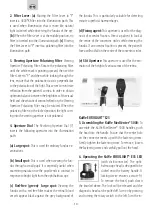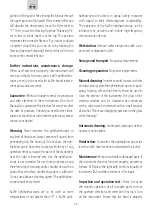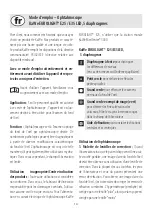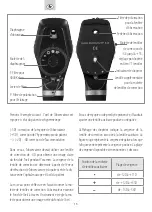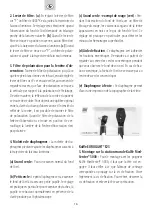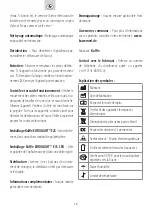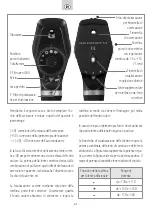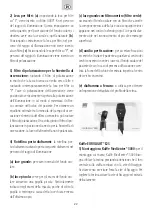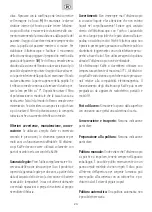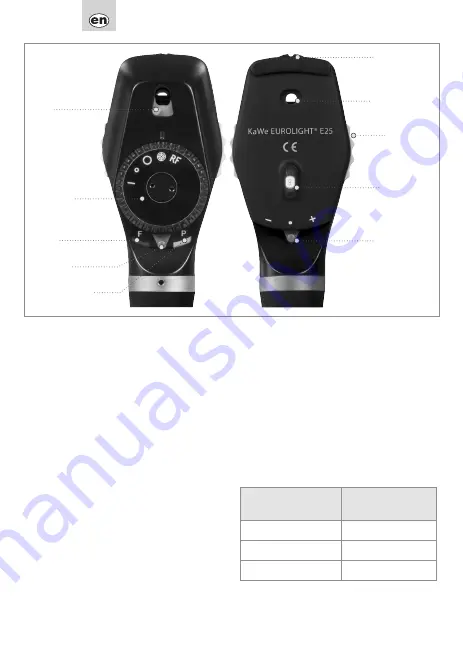
9
Polarizing filter
for viewing window
Viewing window
Lens correction wheel
-36 to +35,
single level,
71 lenses
Display of the
diopter setting
Additional lens
for the lens
correction wheel
Viewing window
cover
Aperture
selection wheel
5 apertures
F: Filter for 4000
Kelvin
P: Polarizing filter
for luminary
Filter lever
For example, consider a case where the observer’s eye
is myopic and the patient’s eye is hyperopic.
(-5D): Correction of Observer’s Myopia
(+3D): Correction of Patient’s Hyperopia
–> (-2D): -4D Correction of Accommodation
In this case, the observer should use the -4D Rekoss
lens to examine the patient’s eyes in order to obtain
a sharp fundus image. The power of the Rekoss lens
is determined by the extent of the observer’s and the
patient’s refractive errors and the distance between the
ophthalmoscope and the patient’s eye, etc.
The actual focussing is performed by rotating the
Rekoss Disc while viewing the patient’s fundus until
the observer achieves the sharpest focus of the fundus
images. In case of high myopia or hyperopia, either a
minus or plus auxiliary lens should be added.
The Diopter Indicator shows the combined dioptric
power of the Rekoss and the auxiliary lenses. The red
figure represents minus power, while the green figure
represents plus power. The ranges of powers that are
covered are shown below.
Position of the Auxiliary
Lens Selectors
Diopter strength
•
-12D to +11D
+
+12D to +35D
–
-13D to -36D


